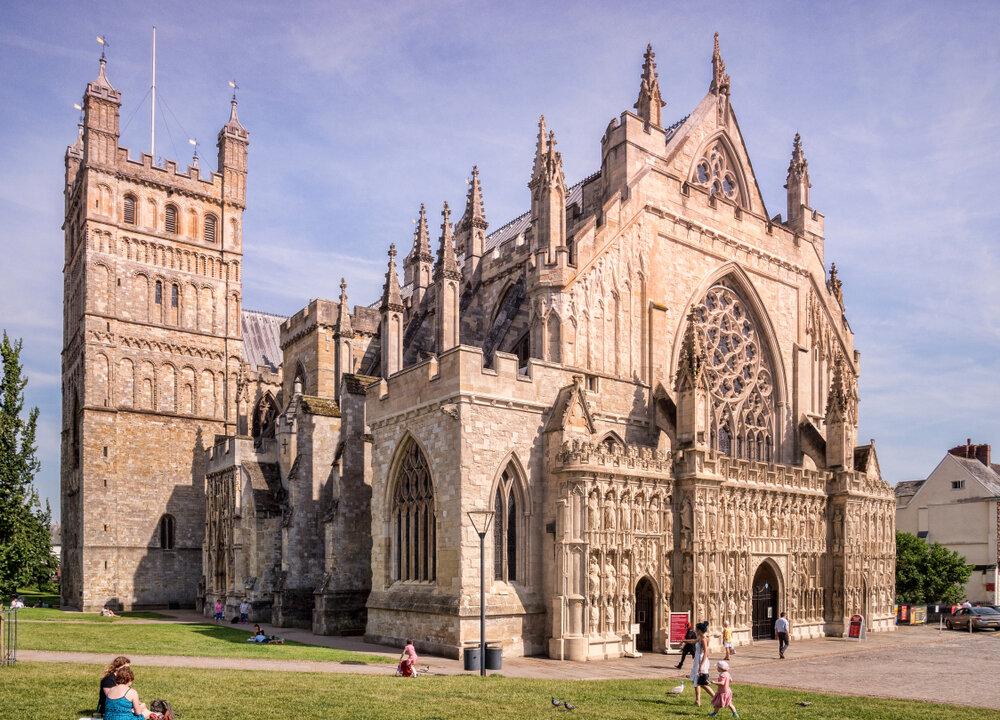Exeter Cathedral stands proudly in the center of Exeter, in the southwestern county of Devon, England. With a history spanning from Roman times to World War II, the large cathedral provides a fascinating insight into medieval Britain with its exquisite Gothic features. To this day, Exeter Cathedral is considered the finest example of the Decorated Gothic architectural style (1280–1380), an English Gothic style.
In 1050, King Edward the Confessor built Exeter Cathedral on a site that previously held many religious buildings, including a fifth-century Christian site, a 10th-century Anglo-Saxon construction, and a Norman cathedral dating from 1180. Completed in roughly 1400, the main body of the current cathedral is in a Gothic style imported from France in the 1240s, featuring extensive ornaments and decoration.






